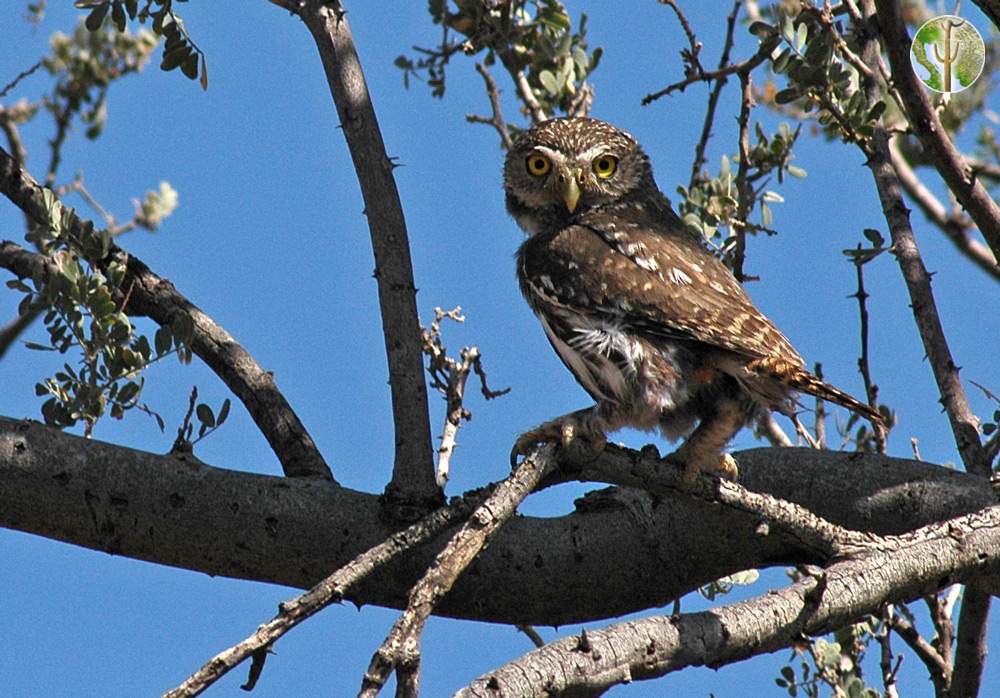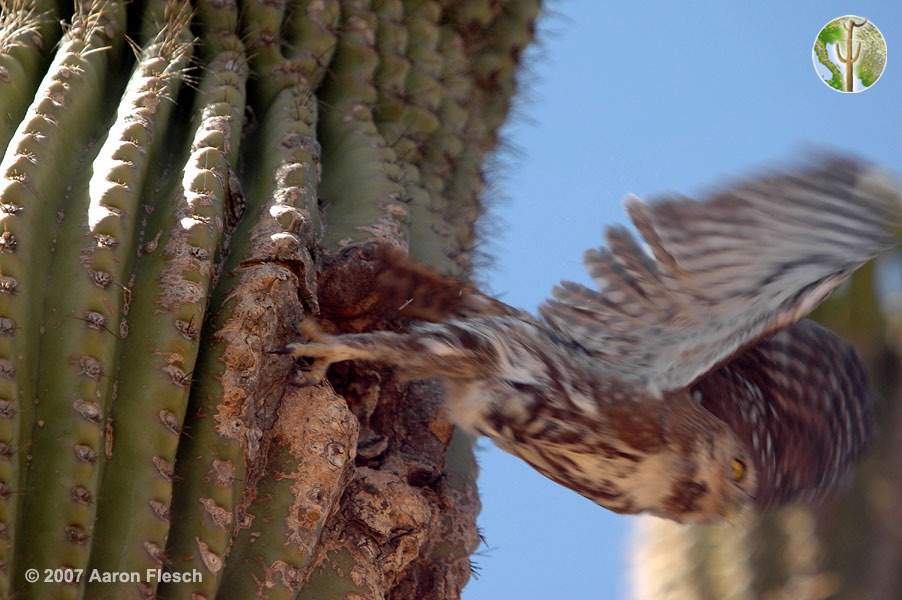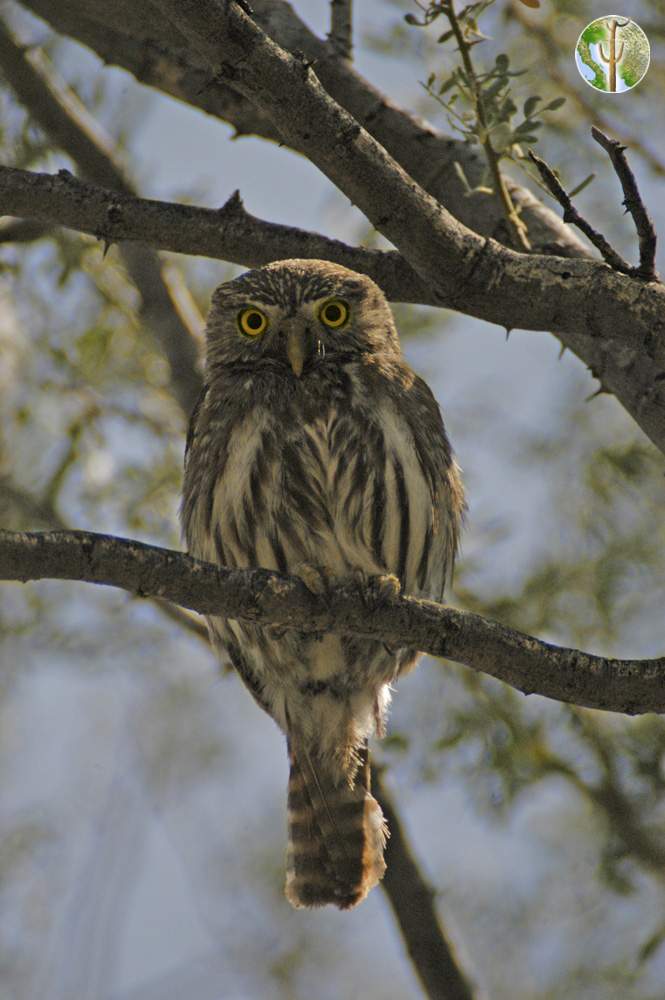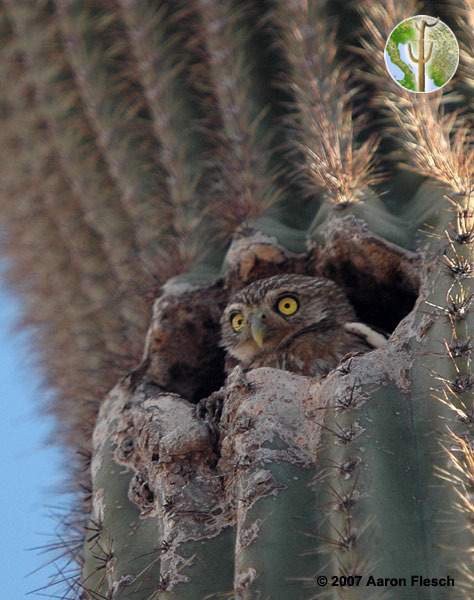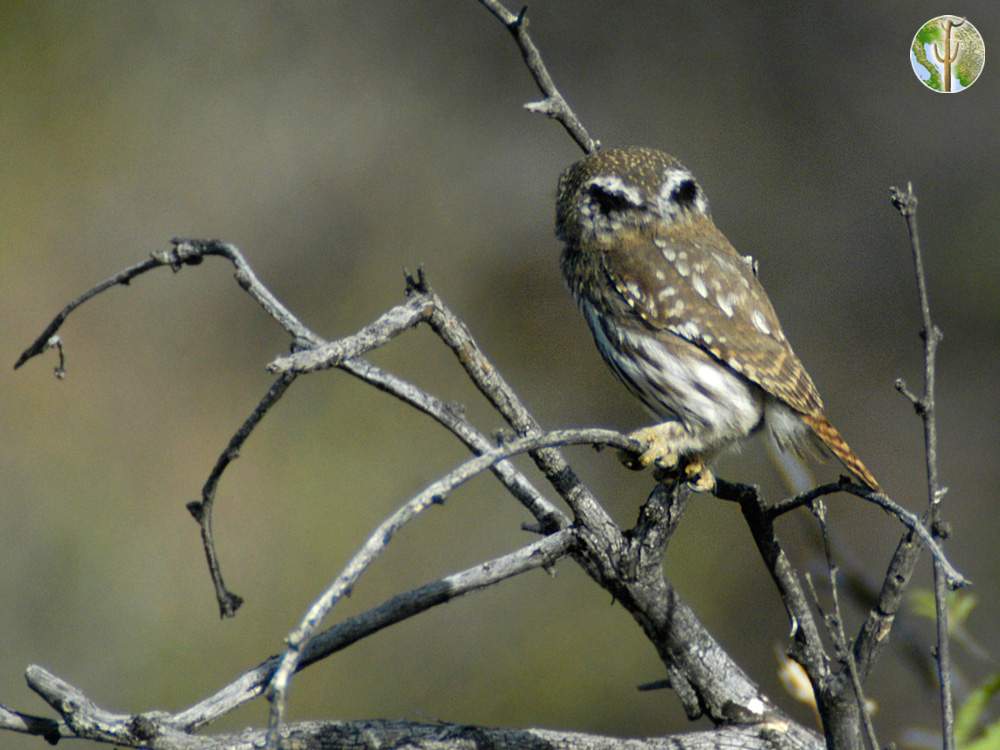Glaucidium brasilianum cactorum, cactus ferruginous pygmy-owl
The cactus ferruginous pygmy-owl (CFPO) or Glaucidium brasilianum cactorum is a small owl (6.5 inches) that reaches the northern end of its range in southern Arizona. It is locally common in parts of Sonora (especially in the south), but is often very localized to specific habitat requirements.
Habitat for the CFPO in the northern 2/3 of the state is patchy. Historically the owl was more widespread and in Arizona it inhabited areas from around the Phoenix basin south and west, and from Tucson and the San Pedro Valley in the east to beyond Ajo into Cabeza Prieta in the west. As of 2011 they are generally extirpated from Arizona outside of Organ Pipe, the Tohono O'odham Nation, and the Altar Valley southwest of Tucson.
The ferruginous pygmy-owl was an endangered species in the U.S., but lost its status. There is currently a relisting petition (PDF) by the Tucson based Center for Biological Diversity.
In northern Sonora near the Arizona border the CFPO has been declining significantly since 2000 when Aaron Flesch form the University of Arizona began monitoring their numbers. He released this detailed report in 2008 and an updated report in 2010 listed below.
The pygmy-owl is a very charismatic bird... I like calling them charismatic microfauna. They are quite handsome and have a very likable personality. They are crepuscular, meaning they are most active at dawn and dusk, but can be active at any time of the day, as well on full moon nights when visibility is increased.
CFPO's diet is varied and consist mostly of lizards, birds, small mammals, as well as some invertebrates such as moths, beetles, grasshoppers, and even ants. Hunting is usually accomplished by perching and pouncing on unwary creatures that pass by. They are quite impressive predators with relatively large talons and amazingly take gila woodpeckers, huge spiny lizards, fast whiptails, and apparently a gambel's quail from time to time.
Nesting takes place in tree and columnar cactus cavities (almost always saguaro cavities in the northern Sonora and Arizona). Ferruginous pygmy-owls usually lay 3 - 5 white, roundish eggs in April and take care of young for approximately 4 months before the young begin to disburse looking for a territory of their own.
Pygmy-owls have relatively large territories up to 30+ square kilometers and are highly territorial. This makes them very detectable as they almost always respond to broadcasts of their territorial call. CFPO territorial call is a short whistle repeated about 2.5 to 3 times a second.
The cactus ferruginous pygmy-owl's preferred habitat in the Sonoran Desert and semi-desert grasslands of northern Sonora and Arizona is large, riparian or xero-riparian drainages that have well-developed mesquite woodland. Associated uplands that have mesquite and/or ironwood seem to be preferred, especially in areas where wash associated vegetation is less developed. Occasionally the owls are able to survive and reproduce in amazingly desolate patches of the Sonoran Desert like near Papago Springs on Cabeza Prieta NWR.
- See many more pygmy-owl photos here
- Lawsuit by the Center for Biological Diversity to relist the Pygmy-owl (2012)
- Population trends of ferruginous pygmy-owls in northern Sonora (A. Flesch 2010)
- White paper: Significance of the Western Population(s) of the cactus ferruginous pygmy-owl (PDF)(Fish and Wildlife Service 2003)
- Distribution, abundance, and habitat of CFPO in Sonora (PDF)(A. Flesch 2003)
- Trends and productivity of CFPO in northern Sonora (PDF)(A. Flesch 2005)
- Roadways and CFPO's in Northern Sonora (PDF)(A. Flesch 2004)
- Click here for the Center's pygmy-owl page
- Fish and Wildlife Service's pygmy-owl page
- Ecology and Conservation of the Cactus Ferruginous Pygmy-Owl in Arizona (Fish and Wildlife Service)
Listen to the pygmy-owl here from the Cornel Lab of Ornithology's Macaulay Library
